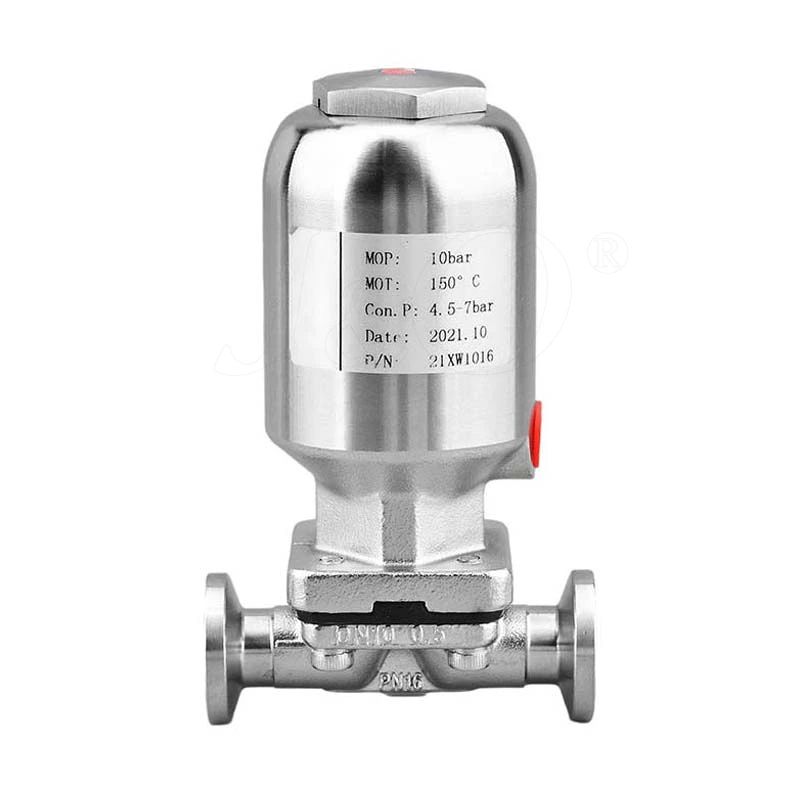Precautions For Installation And Use Of Pneumatic Diaphragm Valves
Sanitary Diaphragm Valve - Installation and use precautions
Pneumatic diaphragm valve is a special form of shut-off valve, which appeared in the 1920s. Its opening and closing parts are a diaphragm made of soft material, which separates the inner cavity of the valve body from the inner cavity of the valve cover and the driving components, so it is called a pneumatic diaphragm valve. The most prominent feature of the pneumatic diaphragm valve is that the diaphragm separates the inner cavity of the lower valve body from the inner cavity of the upper valve cover, so that the valve stem, valve disc and other parts above the diaphragm are not corroded by the medium, eliminating the packing sealing structure and preventing the medium from leaking.
1. The pneumatic diaphragm valve should be installed vertically on the pipeline. If the volume and weight are large or used in a vibrating environment, it should be supported and clamped.
2. Pneumatic diaphragm valves should generally be equipped with bypass lines so that they can be switched to bypass operation when the diaphragm fails or is under maintenance, so that the production process can proceed normally. In general unimportant occasions, the bypass line can be omitted after installing the handwheel mechanism for manual operation, and the valve opening can be limited at the same time. When the handwheel mechanism stops using, it should be restored to the original neutral position to facilitate the normal operation of the automatic control system.
3. When cleaning the pipeline, the adjustment should be at the maximum opening to remove dirt in the pipeline.
4. If the valve body is lined with an anti-corrosion layer, corrosion-resistant soft pads should be used when installed on the pipeline, and care should be taken not to damage the valve body flange sealing surface.
5. The diaphragm and lining should be inspected regularly to prevent damage to other parts and accidents caused by corrosion and rupture.
